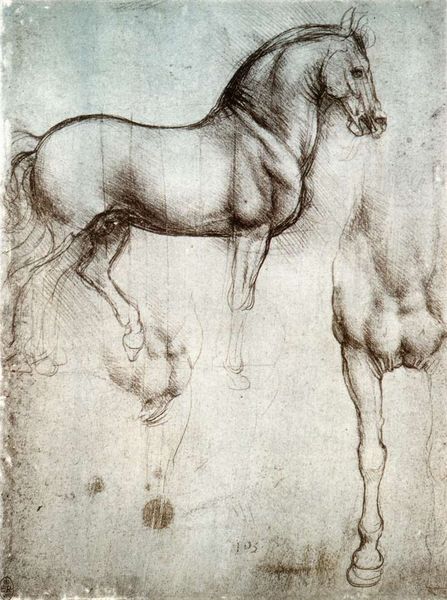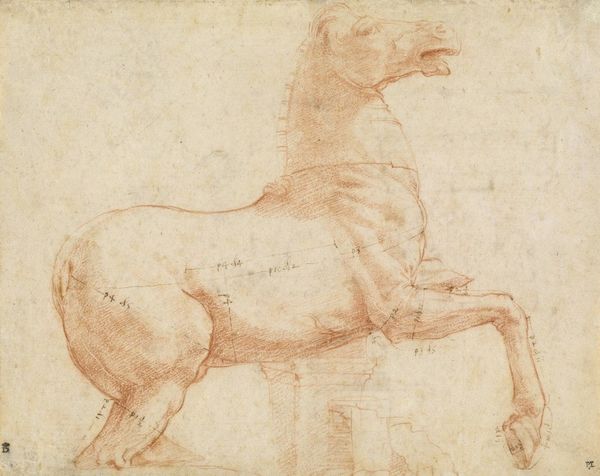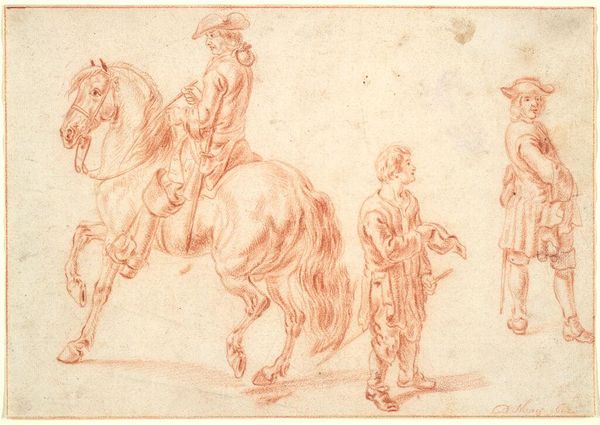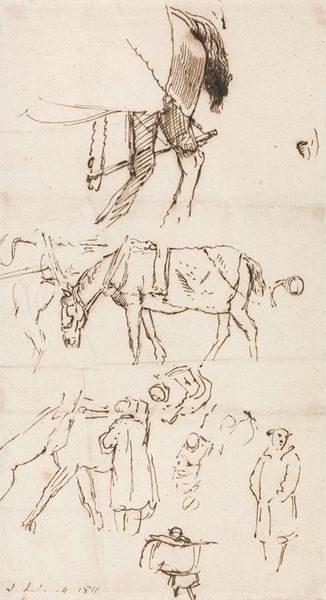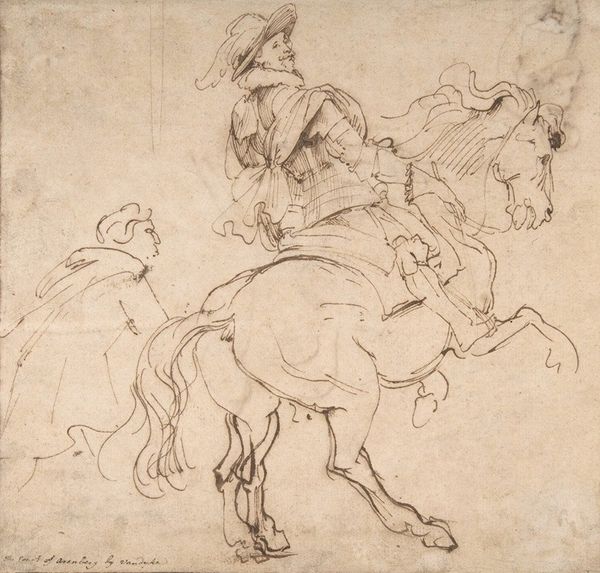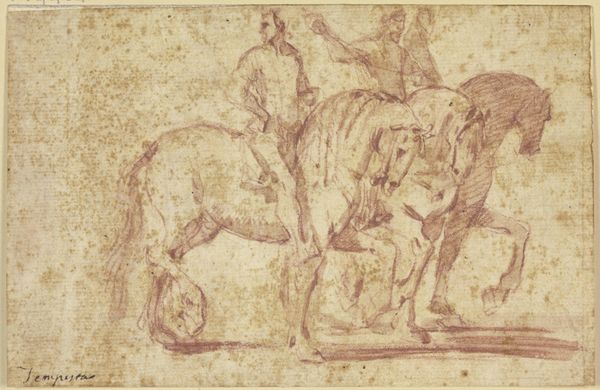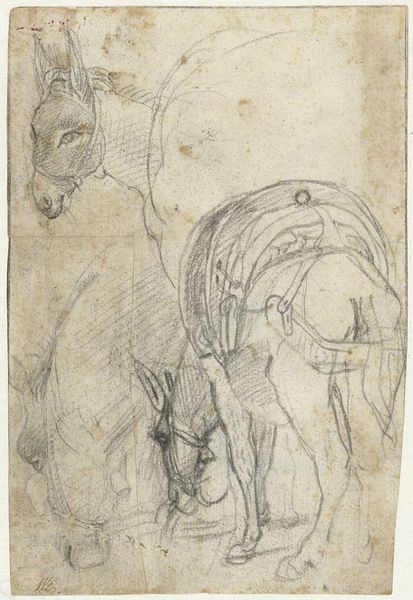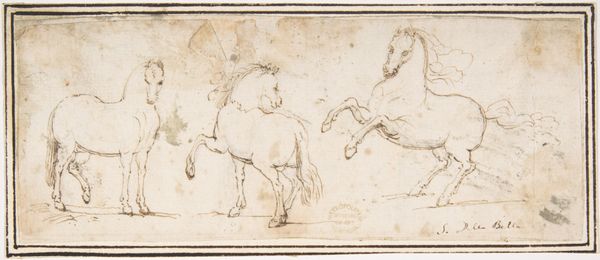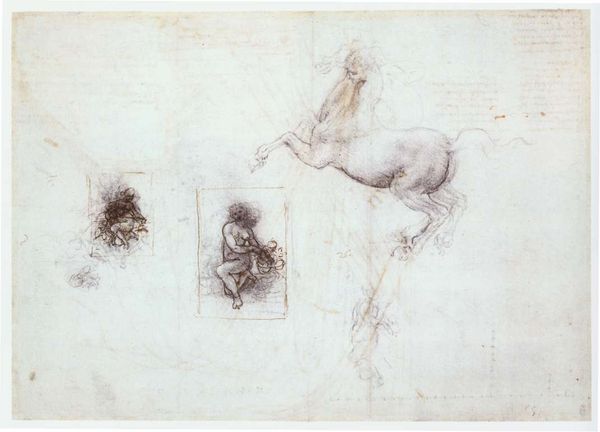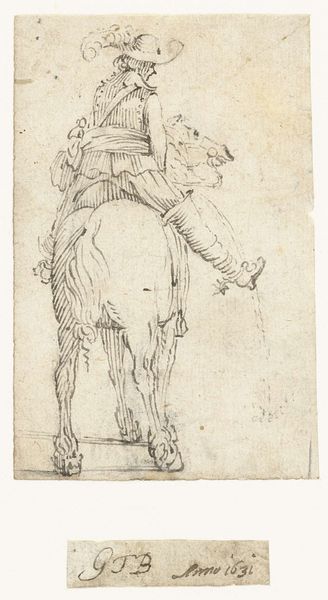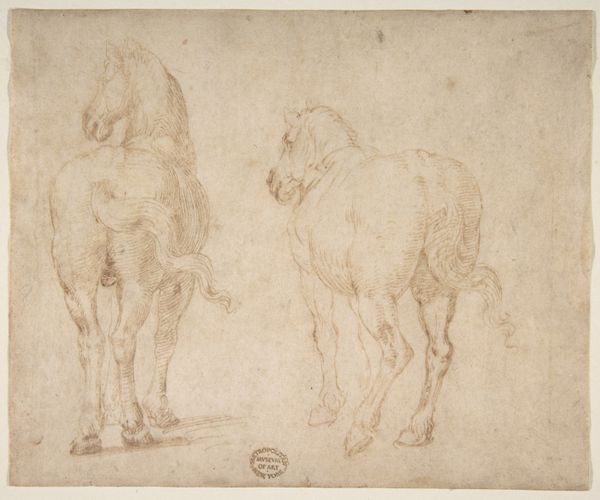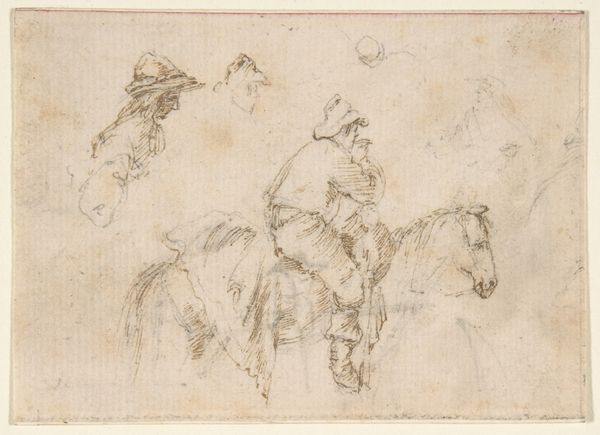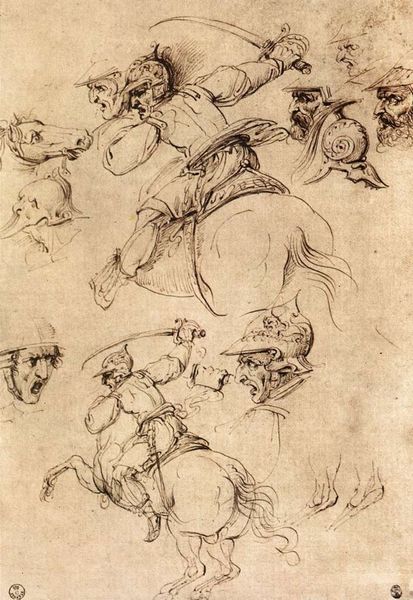
drawing, paper, pencil
#
portrait
#
drawing
#
pencil sketch
#
landscape
#
figuration
#
paper
#
form
#
11_renaissance
#
sketch
#
pencil
#
horse
#
men
#
line
#
history-painting
#
italian-renaissance
Dimensions: 27.8 x 18.4 cm
Copyright: Public domain
Editor: This is "Equestrian monument," a pencil drawing on paper by Leonardo da Vinci, around 1517. The energy in these sketches of horses is incredible; it feels like they're about to leap off the page. What kind of historical context shapes your view of this work? Curator: It's crucial to see these sketches as more than just pretty pictures. Consider the role of the equestrian monument in Renaissance Italy. Powerful rulers, like the patrons Da Vinci sought, used these statues as propaganda – concrete symbols of their power and legitimacy. These drawings offer a peek into that political theater. Editor: Propaganda? That's interesting. So Da Vinci's sketches weren’t purely artistic; they were also tools for...political image-making? Curator: Precisely. He wasn't just studying horses; he was contemplating how to visually embody authority. How could he capture the perfect pose, the ideal musculature, to project the ruler's dominance? Also, museums have played a part. Where did this drawing surface and where has it been displayed to make sure this artwork gains more visibility to the audience? Editor: That makes me think about the audience then and now. Back then, who would have seen these initial sketches? Was it just the patron, or were they circulated amongst the workshop? Curator: That's a fantastic question! Sketches like these could serve multiple functions. Certainly, the patron would likely see them for approval. But, they'd also function as a guide for the assistants in the studio who would eventually contribute to the statue’s realization, dictating how they would execute the sculpture’s elements. Editor: So, in a way, even these sketches had a public role to play within the art world of the time. It’s so interesting to see how political power shaped something seemingly so simple. Curator: Exactly. And today, museums and art historians continue to shape our understanding, by displaying and interpreting pieces like this and impacting current and future generations.
Comments
No comments
Be the first to comment and join the conversation on the ultimate creative platform.
